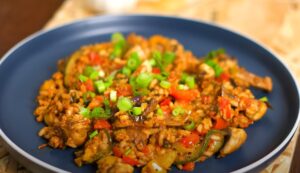Ever get confused about chicken korma and butter chicken? I know I sure did at first. Those Indian dishes sound alike but sure don’t taste the same.
When I started cooking Indian, man those two chicken dishes had me mixed up. But then I made them myself. That’s when I found out they ain’t the same at all. The flavors, what goes in ’em, even how you fix ’em – it’s all different.
Wanna know how to tell those dishes apart? Stick with me, and I’ll break it down. We’ll look at what sets chicken korma and butter chicken apart so you know what you’re really eating. Sound good? Then let’s dig in!
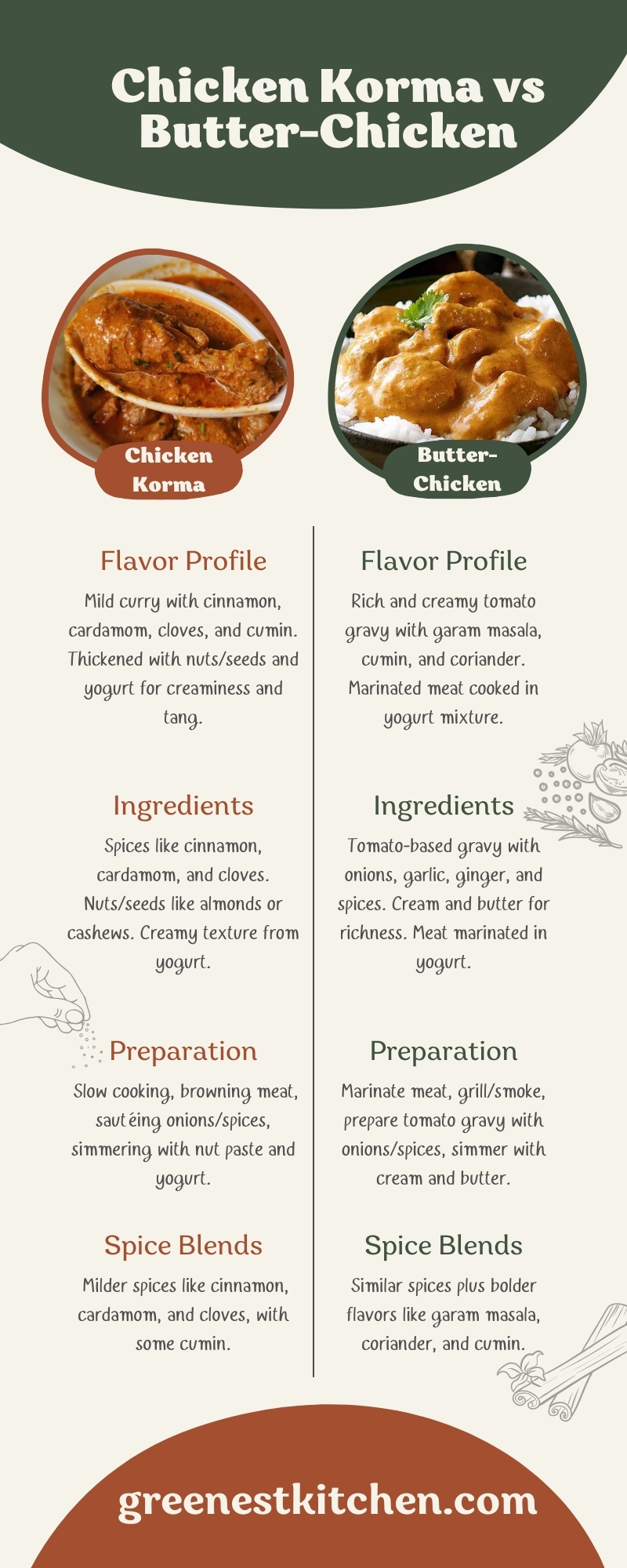
Flavor Profile
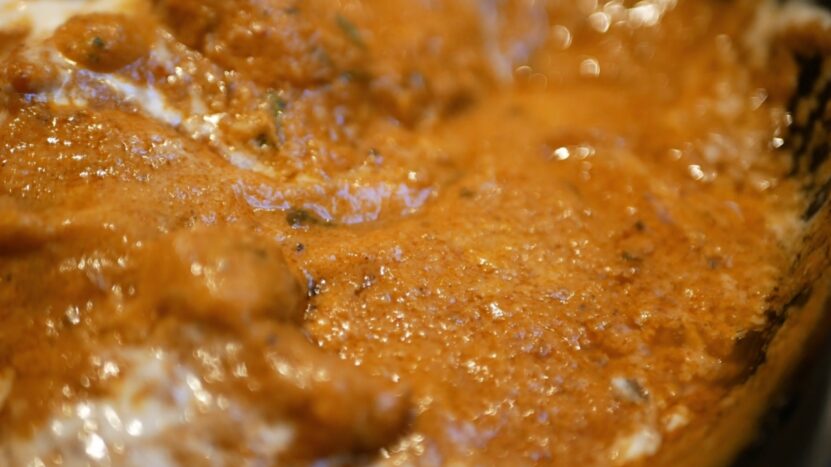
Korma is a mild curry with lots of different flavors mixed in. It’s got cinnamon, cardamom, cloves, cumin, and other spices to make it smell really nice. To thicken it up, they use ground nuts or seeds like almonds, cashews, or poppy seeds. Yogurt is also tossed in there to give it a creamy texture and a bit of tang.
Now butter chicken that’s a rich and creamy curry that’ll really stick to your ribs! It starts with a tomato gravy simmered with cream, butter, and spices like garam masala, cumin, and coriander. That gives it a sweet and tangy taste if you know what I mean.
The meat used is first soaked in a yogurt and spice mixture before being cooked until smoky. Then they throw that meat into the tomato gravy, which has been thickened up more with more cream and butter.
Ingredients
Korma has lots of different spices, like cinnamon, cardamom, and cloves. It also uses nuts and seeds like almonds or cashews that get ground up really fine and mixed in. This thickens up the curry nicely. Another key thing is yogurt – it gives korma that creamy texture and a bit of tang.
Butter chicken’s gravy is tomato-based and has onions, garlic, and ginger in it. It also uses garam masala, cumin, and coriander for flavor. The meat gets marinated in yogurt and spices before cooking. This tenderizes the meat and adds a lot of taste.
Once the meat is done cooking, it gets put into the tomato gravy. Then they mix in some cream and butter to really thicken it up.
Preparation
Korma is all about low and slow cooking. First, you brown the meat in some oil to make it tasty. Then, you set it aside and cook the onions and spices till they smell really good.
Next, in goes the nut or seed paste, followed by the yogurt and meat. After that, it’s time to simmer till the meat is tender and the sauce thickens up. Makes your mouth water just thinking about it, right?
Butter chicken takes a bit more work, but it’s worth it, I promise! First, you marinate the chicken in a yogurt and spice mix for hours or even overnight. This adds lots of flavor.
Then you cook the chicken in a special oven or on the grill to make it smoky. While that’s cooking, you start the tomato gravy. Sauté the onions, garlic, and ginger until soft. Then add spices and crushed tomatoes.
Once the gravy is done cooking, add the grilled chicken along with some cream and butter. This thickens up the sauce so it’s rich and creamy.
Also, you should check out IdealNutrition and see other interesting combinations with chicken, butter, cheese, and much more.
Differences in Spice Blends
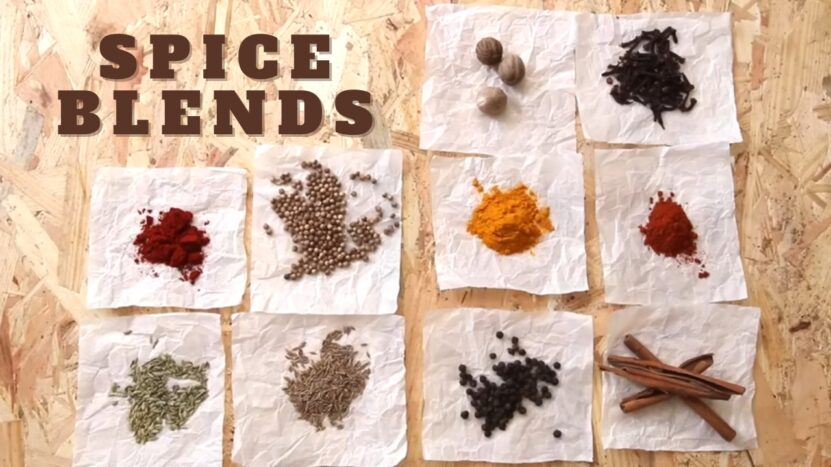
Chicken korma uses a mix of spices that include cinnamon, cardamom, and cloves. It also throws in some cumin. The spices in korma are usually not as strong as those used in other curries. That’s why korma is a good choice if you can’t handle super spicy food.
Butter chicken is similar but different. While it’s got cinnamon, cardamom, and cloves like korma, it adds some bolder spices, too – things like garam masala, cumin, and coriander. These spices give butter chicken a richer, deeper flavor. And the cream and butter they mix in help balance out the intensity of the spices.
Nuts and Seeds
When it comes to Korma chicken, we’re talking almonds, cashews, and maybe poppy seeds, too. That nut paste gets mixed into the curry to make it thick and creamy. It also gives it a nice sweet flavor from those nuts. Using nuts and seeds is a big part of Mughlai cooking, which is all about rich and indulgent food.
Now Butter Chicken is a whole different ballgame. There are no ground-up nuts or seeds in this one. Instead, it gets its creamy texture from butter and cream. Can you believe it? They simmer the tomato gravy with cream and butter until it’s super lush and velvety. That sauce just coats the chicken so well.
Serving and Pairing
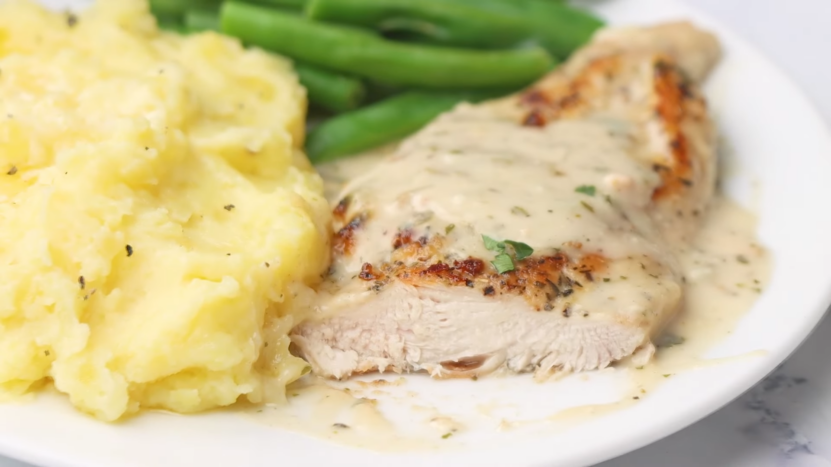
I typically serve both of these dishes with rice and naan bread. Korma is served with plain basmati rice to help balance out the richness of the curry, while butter chicken is served with buttery naan bread to complement its creamy texture.
When it comes to pairing these dishes with drinks, a crisp white wine or a light beer would pair well with korma. The mild flavor profile of the curry would not overpower the flavors of the wine or beer.
If you’re aiming to plate like a pro, consider garnishing each dish with a sprig of fresh cilantro or a sprinkle of toasted nuts for added texture and visual appeal.
As for butter chicken, a red wine such as a Cabernet Sauvignon or a Malbec would pair well with the rich and creamy tomato-based gravy.
Final Words
You really can’t go wrong making either of these recipes. In my house, we tend to like the butter chicken a little better since it’s super creamy and rich. But we also love chicken korma – that sauce is just awesome.
Both dishes would be a big hit at your dinner table, so you might wanna try making both and see which one you and your family enjoy more. Don’t be afraid to experiment!

Hi there, I’m Sophie, 35, and I love to cook and experiment with new recipes. It’s my secret sauce for keeping my hubby and three kiddos smiling and our home filled with joy. Cooking is my way of saying, “I love you,” and seeing my family happy and healthy is the best reward.



